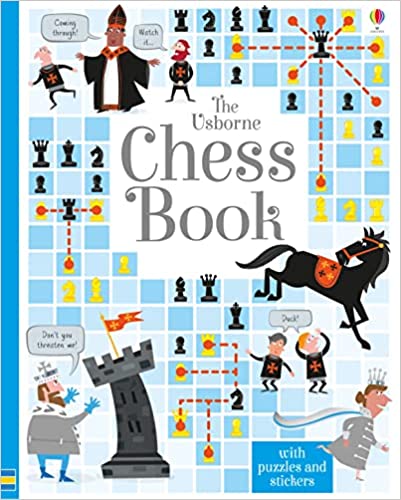Chess Programming Basics
Curiosity
One fun aspect of parenting is revisiting things you learnt as a child, as the teacher. Since putting a chess board somewhat prominantly at home the eldest has expressed some interest and learnt a few moves. We bought a chess book aimed for a young audiance to see the game taught gently, and I found myself learning more than expected.

Once down the rabbit hole of chess, I started to read about the early chess computers, and particularly those with bespoke hardware/software. I read with great interest of subsequent developments through to present with the rise of stockfish, the introduction of NNUE to the engine, and the subsequent training improvements using the schemes borrowed from alpha-go.
I wanted to type up some of my notes, and I hope to use them as the basis for this post and some subsequent deeper exploration of the concepts. In particular I am interesting in trying to get a basic chess engine working on an FPGA, ie. using digital logic. This seems to be a relatively unexplored, at least in the public domain.
History
The first recognisable chess programming paper is Claude Shannon’s paper Programming a Computer for Playing Chess which make some interesting contributions:
- precisely defines a “postion”
P, ie. the board plus addional state to continue the game in accordance with the rules. - states the intractability of either fully exploring a search tree (time), or pre-computing the best move for all positions (storage).
- gives an approximate position static evaluation function
f(P). - states the shortcomings of static evaluation in the middle of piece exchanges, and the need to evaluate up to a quiescent (quiet) positions.
- introduces the switch between minimising/maximising the evaluation function during each ply to consider the best reply for each move during the search.
- proposes a binary coding (bit sizes) for position
P, and a movemas tuple(from, to, promotion). - algorithm to apply a move to
Pto determine the next game state'P. - that the moves for a queen are the sum of a rook and bishop, (what we now recognise as diagonal and manhatten).
- that some moves (‘psuado legal’) from a move generator may turn out to leave the player in check and therefore be illegal.
- definition of stability
g(P)and a metrich(P,m)to prioritise the exploration of “forceful” moves (capturing, threatening, check). - the use of opening books.
- changing evaluation weights at open/mid/end game.
Basic Representation
The canonical represetation of a chess board is a Forsight-Edwards or ‘fen’ string that provides the necessary information to restart a game from a particular position. It’s a 7-bit safe ASCII string such as rnb1kb2/pppp4/6p1/4pp2/8/4PP2/PPPP2P1/RNB1KB2 w Qq - 0 9 shown below. There are 6 sections, separated by a space character.
- Piece placement. Describes the 8 ranks each separated by a
/, consisting of algebraic notation pieces for whitePNBRQKand blackpnbrqk, plus the numbers12345678to indicated repeated gaps. So the initial position isrnbqkbnr/pppppppp/8/8/8/8/PPPPPPPP/RNBQKBNR. - Who to play, starting with
wfor white andbfor black. - Castling rights, either a dash
-for none, or one or more characters fromKQkqto indicate for kings/queens side castling for white and black respectively. - En passant target square, a dash
-or the algebraic notatione3of the square just passed over - Halfmove clock, as an ASCII decimal integer
- Fullmove clock, as an ASCII decimal interger. Starts from 1 and increases after each black move.
Universal Chess Interface (UCI) Protocol
UCI is a simple protocol between chess engines and game UI’s. It is again ASCII text only and puts the game UI in control of the chess engine. Either party can send a message to the other, messages as ASCII commands separated by a line break. A simple exchanage might be:
> uci
< id name MyEngine
< uciok
> isready
< readyok
> ucinewgame
> position <fen string | startpos> <moves>
> go infinite
> go searchmoves <e2e4>
> go movetime <msec>
> go depth <2>
> stop
< bestmove <move>